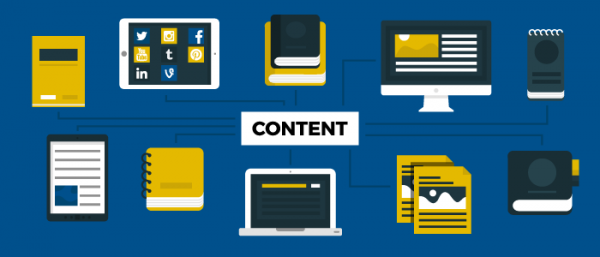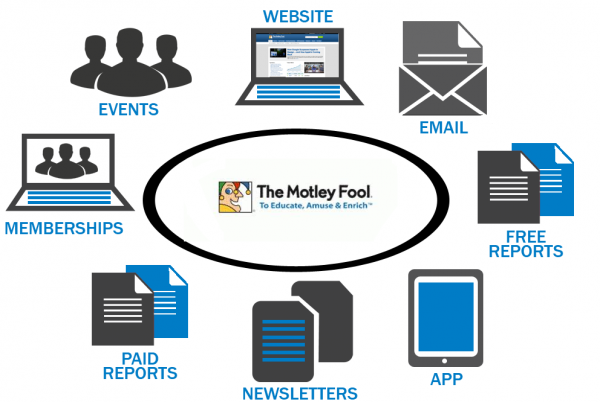Publishers sometimes forget that they, themselves, are retailers; they sell subscriptions, memberships, books, ancillary products, events, etc.

We talk a lot about multiplatform publishing around here, because it’s the way of the future. Yes, that’s true. But retail distribution is still a part of most publishers’ lives. It’s smart for a publisher to think like a retailer: Get people into your store, where they can become your customers. And when they become your customers, get them to come back for more. The “store,” of course, is connected to your website, your Portal.
To build a successful retail distribution channel, however, you’ll want to team up with a retail marketing partner that will allow you to place your product in its store either for free or for a fee. The retail marketing partner might be a retail store, a wholesaler, an e-commerce site, a mail-order catalog, a trade association — there are a lot of ways to distribute products.
[text_ad]
 At Mequoda, we use Amazon’s CreateSpace. It’s free to publish a book on CreateSpace, although it’s $10 if you want your own imprint. Upon publish, you’ll choose a royalty rate of either 35% or 70%. You can only get 70% if your book is priced $2.99-$9.99. Any other price points automatically reduce you to 35% (the highest price point is $200 and the lowest is 99 cents).
At Mequoda, we use Amazon’s CreateSpace. It’s free to publish a book on CreateSpace, although it’s $10 if you want your own imprint. Upon publish, you’ll choose a royalty rate of either 35% or 70%. You can only get 70% if your book is priced $2.99-$9.99. Any other price points automatically reduce you to 35% (the highest price point is $200 and the lowest is 99 cents).
But CreateSpace is certainly a modern example. You can also:
- Sell consumer and business books, as well as videos and audiotapes, through brick-and-mortar and/or online bookstores.
- Offer special reports and white papers through affiliations with business groups and trade associations—at their events and expos and through their online stores.
- Market business tools such as kits, plans, software, and DVDs through brick-and-mortar and/or online office supply stores, computer stores, and stationers.
- Sell consumer merchandise—sports items, clothing, games, calendars, pet equipment, etc.—through retail shops or e-commerce sites that market similar or compatible products.
- Promote events through related but non-competitive websites.
The economics of retail distribution are quite different when the publisher assumes that the primary goal of selling products via the retail channel is to support a Mequoda System built on the Mequoda Method to build a robust customer database, rather than turning a profit.
Wait, what? You want me to go through all this trouble to build an email list? Not for revenues?
For publishers—for anyone—that is often a tricky sell!
Using retail distribution channels for the purpose of driving traffic to your website is not much different from selling a product for profit through a brick-and-mortar retailer or selling it through a mail-order company or an online retail site. In any case, a physical product ends up in the hands of a user. The important element to recognize, however, is that the physical product also presents a unique opportunity to send an additional message directly to the customer: “Visit our website!”
And better yet – “Buy our digital products when you get there!” because your overhead will be much less expensive on the digital products they buy in the future. Spend the money on retail distribution now, but get them back to your site to sign up for your newsletter and buy a digital product later. We find the best way to get someone on your email list, is to give them a freebie.
Perhaps a freebie related to the hard copy book or product they’ve just bought? We bet the conversion rate will be impressive!
An oldie but goodie case study: Motley Fool, circa 2006
The Motley Fool boasts a strong online legacy, combined with—from its earliest years—a strong offline product presence. The company began as a pioneering partner of AOL in 1994; shortly thereafter, Fool.com was launched. By 1996, The Motley Fool had published the first of eight best-selling books in partnership with Simon & Schuster. Subsequently, several additional books were self-published under the Fool Publishing brand.
While not as huge a chunk of its business as, say, its subscription newsletters, the Fool books sold at retail—both online and offline—continue to be an active part of the company’s media products efforts.
“We certainly believe that having a significant multimedia and offline presence is important to driving our business,” said Brad Clark, former Chief Marketing Officer at Fool back in 2006 when we first interviewed him. “People who experience The Motley Fool offline, through our syndicated radio or print commentary or our published books, feel a connection to our philosophy. And once those folks feel that affiliation, they come to our website.”
In 2015, the Motley Fool has grown beyond their retail distribution channels that gave them their start, into many more platforms.

“Free-to-fee” business model
The Motley Fool has always followed the “free-to-fee” business model.
“We didn’t invent it,” he explained, “but the premise is to develop a free relationship first. We find that we’re much more successful selling information products to people with whom we’ve already cultivated a free relationship. And while there are lots of ways to cultivate that relationship, the email newsletter is arguably the best. It’s certainly one of the leading ways that we do it,” he says.
See? We weren’t kidding about building your email list, the Motley Fool has been doing it for at least ten years.
The Motley Fool can identify a clean connection among the content that appears in a free email newsletter, additional page views on Fool.com, and the ability to monetize those visitors/readers.
“The Motley Fool is certainly a publisher,” Mr. Clark added, “but we view ourselves primarily as an Internet company. And as an Internet company, it’s important that anything that we do offline has some direct linkage to our web activities.
“In general,” he said, “the significant business value for us of all of our media products is credibility and awareness, which then results—either directly or indirectly—in traffic to the website”
“Our overall goal is to raise brand awareness in a coordinated, comprehensive, holistic way by getting our message out to people where they logically reside,” confirmed Sally Adams, Vice President of Media Products and Communications, again, back in 2006. “So all our media products eventually do lead the customer to our central website, Fool.com.”
For the books sold 20 years ago, The Motley Fool was unable to take advantage of the sophisticated technological capabilities that are available today—targeted landing pages, dedicated URLs, controlled testing, etc. Current efforts at the company, however, are definitely geared toward integrating their marketing efforts, PR campaigns, and product design—as well as linking their media products to specific online efforts.
In the past, they were very much directing people to Fool.com. Now, they’ve become much more strategic about driving people to specific, targeted URLs or landing pages.
While The Motley Fool doesn’t currently have as strong a presence in the retail space as it did several years ago, the online monetization opportunities are definitely in place, selling books and other media products through retail partnerships—if only at breakeven profitability—and seems to be an obvious place for the company to invest. And, of course, the products should include a marketing message or response mechanism to drive buyers online.



Internet marketing is tuff, and is easier with the right training and networking with other marketers. There are a handful of good memberships online, some free, some paid.